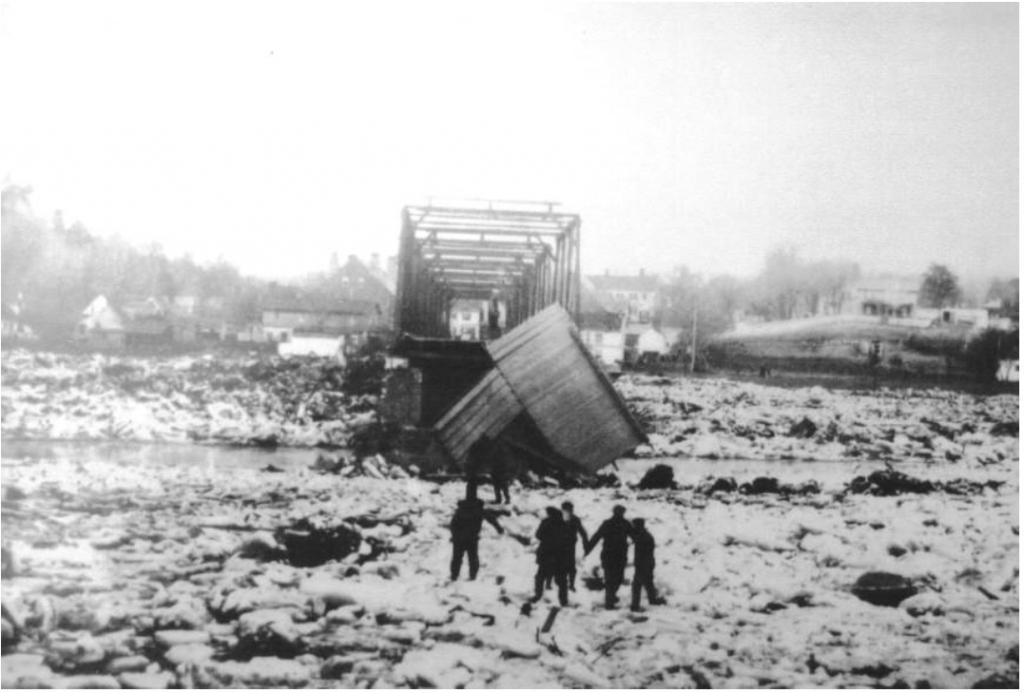Ice
The winter of 1917-1918 was the coldest recorded in Virginia. Snow fell some three times its normal average and the Potomac River and its tributaries froze. Additionally, the entire length of the Chesapeake Bay was frozen, with Chincoteague Bay frozen to a depth of 10 inches at its mouth. When the ice began to thaw and recede in Falmouth, ice flows jammed against bridges, causing their collapse.


After five spans of the Falmouth Bridge were destroyed by ice, Falmouth residents W.E. Brooks and Nelson Berry, immediately gathered a group of Stafford citizens to salvage broken parts of the destroyed spans. A footbridge was constructed from the debris to allow residents to cross the Rappahannock River. Many citizens of Falmouth and south Stafford worked at the Washington Woolen Mill in Fredericksburg and were needed by their employers to return to work.
Ice Harvesting
Long before ice makers came to be commonplace in-home kitchens, families obtained ice for the summer by cutting it during the winter from the nearby rivers and creeks or from ice ponds that were sometimes built on peoples’ farms. Property owners dug deep pits in the ground that they lined with straw for insulation and ice stored in these pits lasted all summer. Remnants of ice pits are often found around early home sites.
The following article is from the Evening Star (Washington, DC) of February 19, 1914:
“Getting Big Ice Harvest. Reported to Be Five Inches Thick on Tributaries of Potomac”
Residents of the Creeks tributary to the Potomac are taking advantage of the present freeze to gather a crop of good thick ice for summer use, and, according to reports, more ice is being stored this winter than has been done for the past four years or longer. When good heavy ice last made it was reported throughout the country that it was full of disease germs of all kinds, and as a consequence few of the country people cared to take chances in cutting and using it.
This winter, it is stated, the ice has been pronounced good, and it is being cut in large quantities. In the vicinity of Occoquan, Va., the ice being cut off Occoquan creek is said to be about five inches thick and is good and hard, and the same conditions are said to prevail in Aquia creek, at Quantico and other points, and many thousand tons of the natural product are being harvested and housed.


